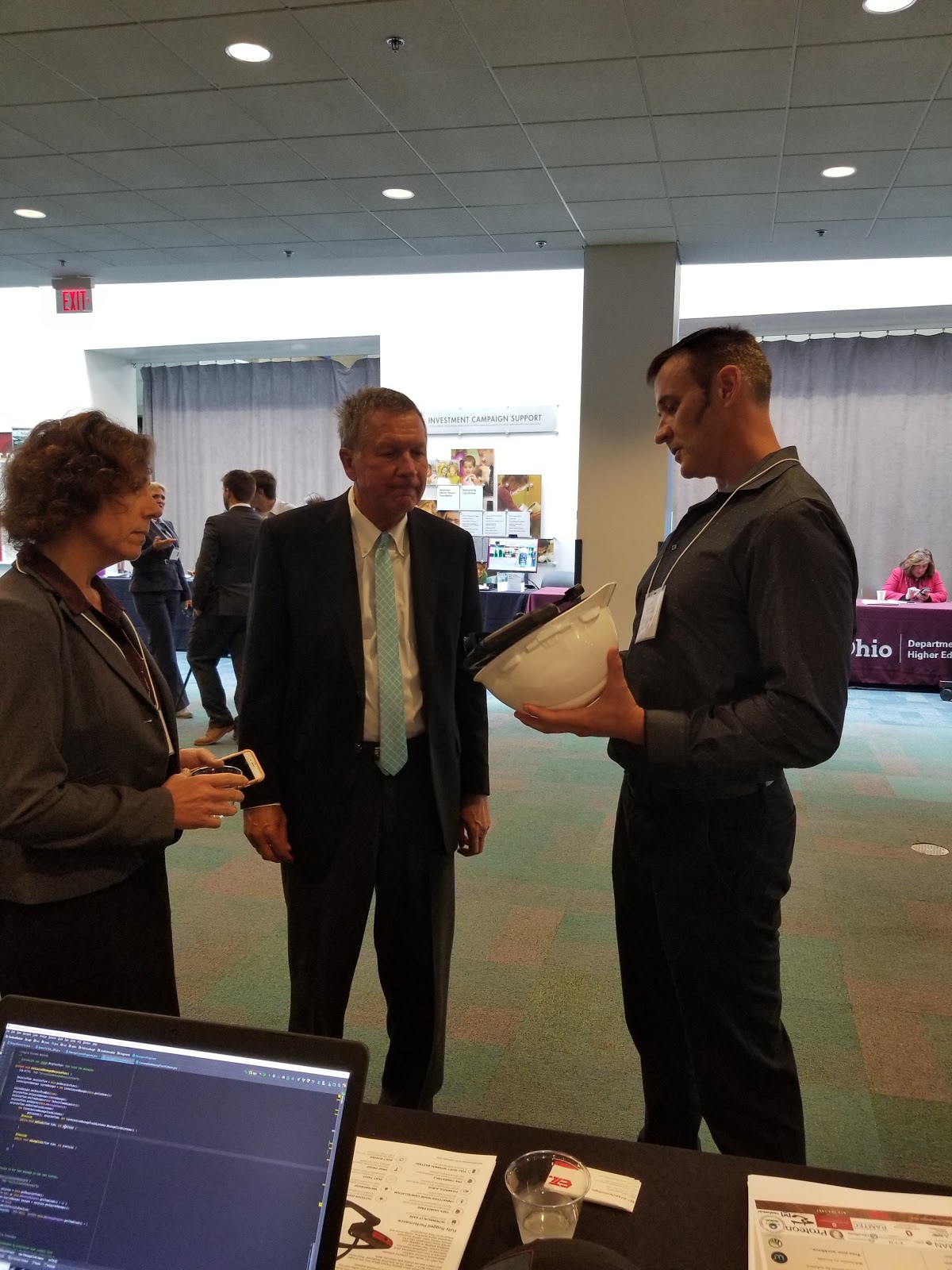EduTechnologic has spent years developing, testing and researching wearable technology. We started developing theoretical models several years before  Google Glass hit the market. As an early adopter of the wearable technology, we learned the strengths and limitations capabilities.
Google Glass hit the market. As an early adopter of the wearable technology, we learned the strengths and limitations capabilities.
More importantly, we continue to research and test tools with users to understand how to construct and build technological solutions that are intuitive, enrich the learner’s experience, and promote learning. The origins of our research we began developing an augmented reality mobile application to study the affect on non-traditional students in higher education settings to assess the use of the technology to help adults acclimate to their environment by increasing their efficacy. In theory, a learner who feels confident and safe in their learning environment increases the overall performance for success.
Currently, EduTechnologic is finishing an industrial and manufacturing application as part a RealWear Pioneer project partner to construct a mobile and wearable application that doubles as an On-The-Job-Training (OJT) real-time content delivery system. The technology is a highly adaptive and interactive technology that integrates mobile technology, a content delivery system, cognitive services, artificial intelligence, and machine learning to provide content in real-time.
 Working with Microsoft we tested the Hololens and worked directly with the Microsoft Custom Recognition Intelligent Services (CRIS) to integrate a cognitive custom Chemistry Cortana voice system along with our proprietary Virtual Chemistry Simulation Lab. The Virtual Chemistry Lab we have been working with the open resource project, Chem LibreText, to build a training solution to provide a 3D interactive learning environment. The targeted audience is underserved, high-need populations without access to resources.
Working with Microsoft we tested the Hololens and worked directly with the Microsoft Custom Recognition Intelligent Services (CRIS) to integrate a cognitive custom Chemistry Cortana voice system along with our proprietary Virtual Chemistry Simulation Lab. The Virtual Chemistry Lab we have been working with the open resource project, Chem LibreText, to build a training solution to provide a 3D interactive learning environment. The targeted audience is underserved, high-need populations without access to resources.
EduTechnologic has also built and tested a wearable technology that promotes exercise while learning about the environment. This project is still in a development prototype phase.
“Cast to Glass” is an application we designed along with an Ohio State surgeon at the OSU Wexner Medical Center. The original concept was to use an open source device to capture and store data during examinations in remote locations. We assessed the hardware and the limitations. The final project we built a method to use Google Glass to present and capture real-time data patient from several machines and MRI’s. Additional we tested Google Glass in the OSU Veterinary Clinic to assess potential uses for faculty to train and capture information for student learning.
Within workforce development, EduTechnologic worked with medical professionals in the construction of a design to use wearable technology to allow people with cognitive disabilities access to real-time instruction and a virtual assistance while in the workplace.





